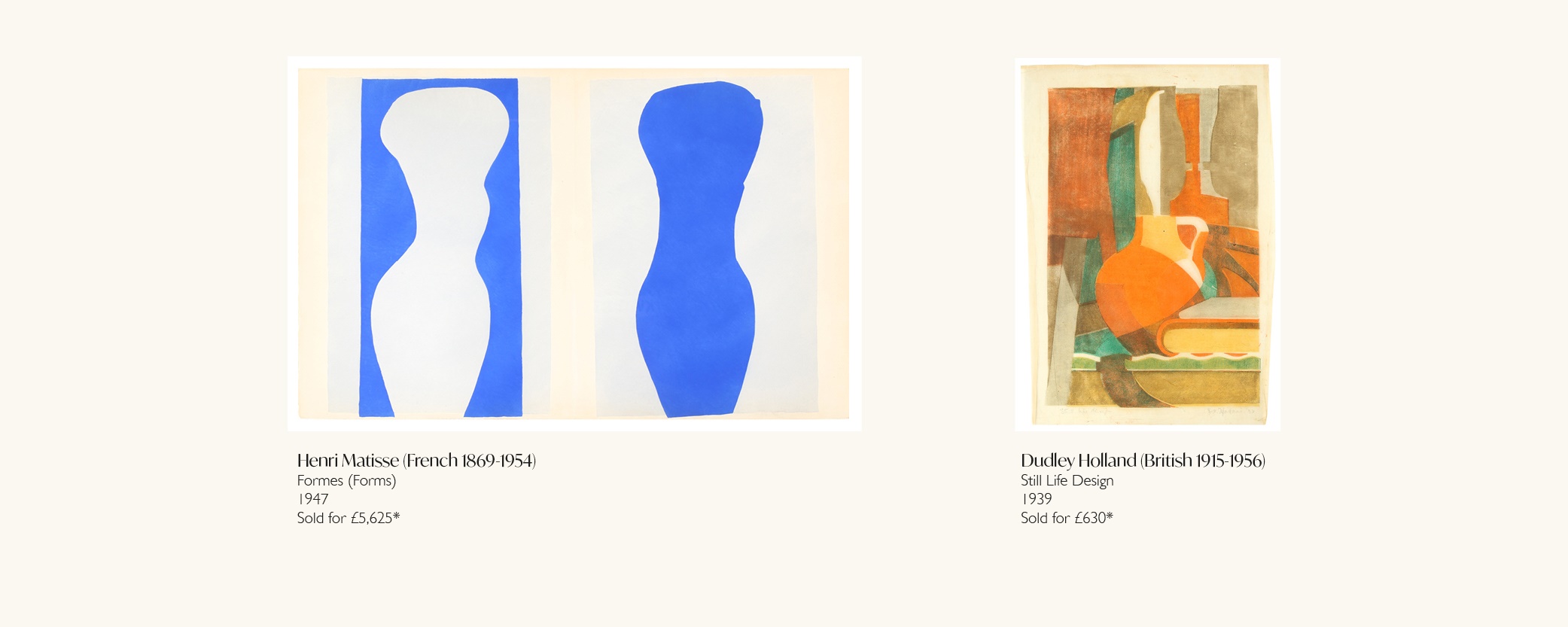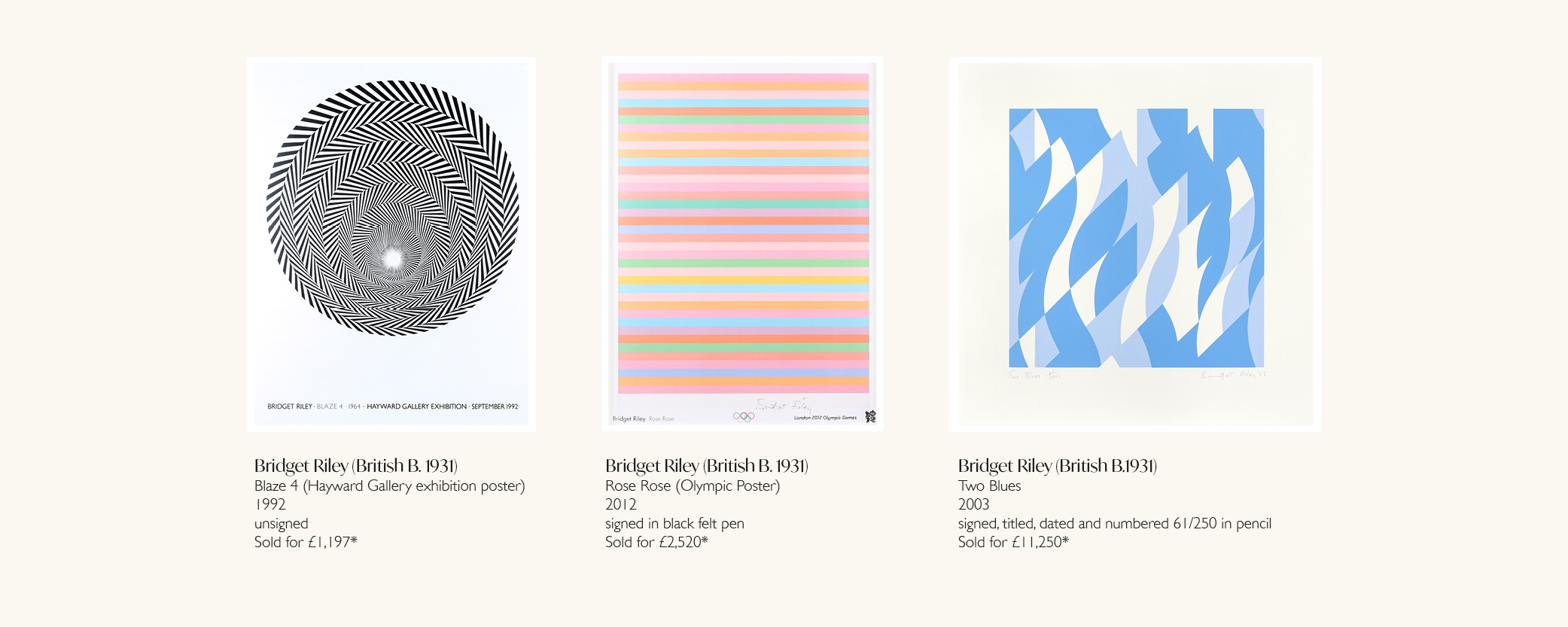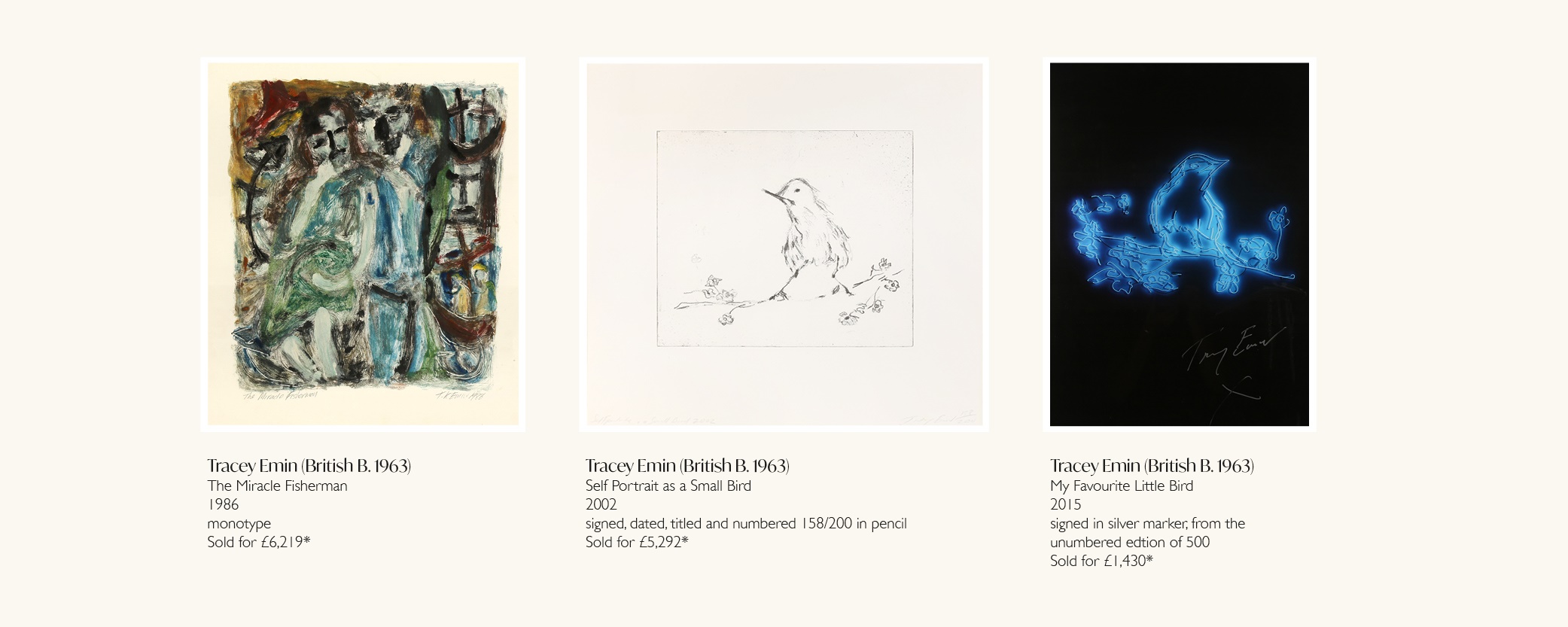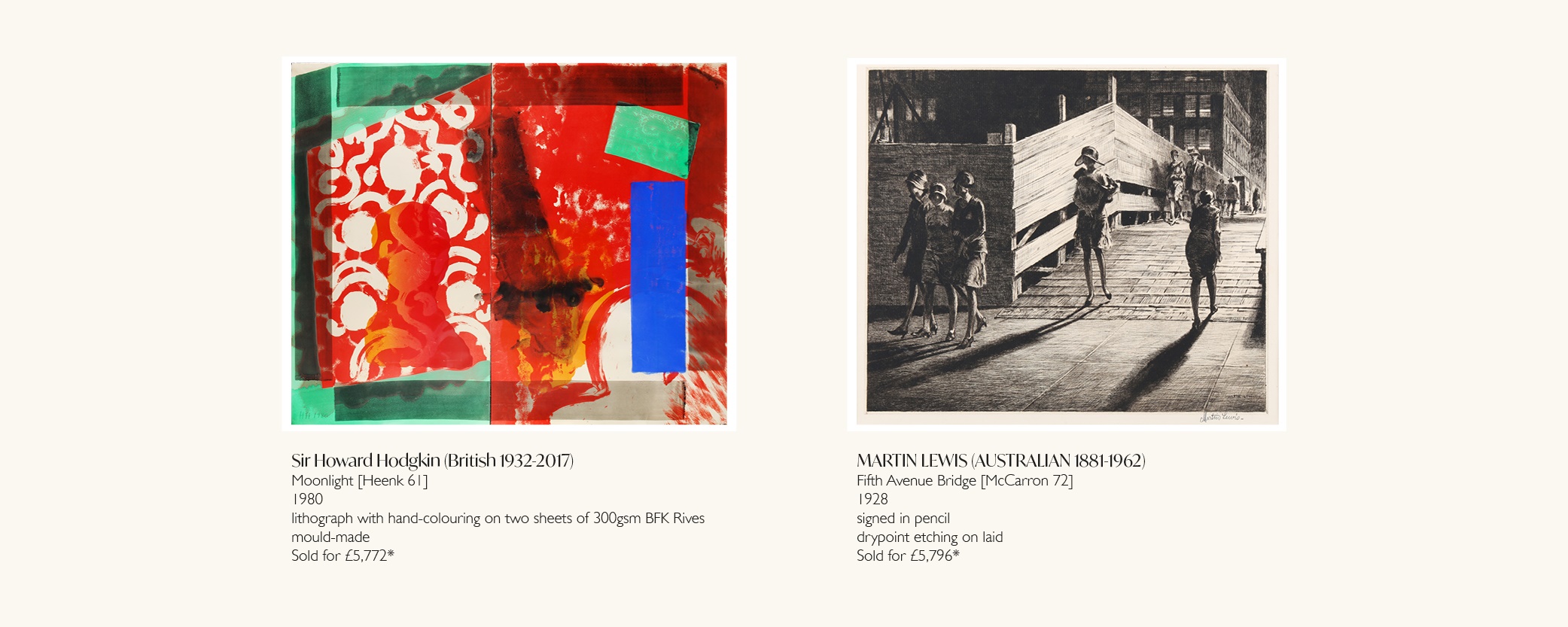

If you've inherited a work or recently added one to your collection, you may be wondering about its value. Assessing a print’s worth requires research, expert evaluation, and an understanding of market trends.
There are a few key factors that influence our specialists when giving a print valuation.
The artist is the primary factor in determining a print’s value. Prints by blue-chip artists (those with well-established reputations and strong market demand e.g. Pablo Picasso and David Hockney) command significantly higher prices because they are highly sought after, and their original works are often out of reach to the average collector. This makes prints an attractive alternative, allowing collectors to own a piece of an esteemed artist’s work at a more accessible price point. For example, see Henri Matisse’s Formes from his 1947 Jazz Portfolio.
The medium of printmaking offers a unique versatility that can also elevate the market appeal of works by lesser-known artists. Collectors can appreciate the artistic and technical merit of certain prints, increasing their value despite being from lesser-known artists. A good example of this is Still Life Design – an attractive linocut by relatively unknown artist Dudley Holland - which achieved a fantastic result at auction

Hand signed prints hold a special appeal to collectors - providing a tangible connection to the artist. This makes them more sought after, and thus more valuable.
The addition of a signature to a non-limited-edition poster can drastically increase its value and collectability.
This theory is demonstrated perfectly by the Bridget Riley works below, unsigned Blaze 4 (Hayward Gallery exhibition poster), hand signed Rose Rose (Olympic Poster) and hand signed and numbered Two Blues.

Edition size matters when determining a print’s value. Limited edition prints are more desirable. The smaller the edition size, the rarer the artwork, the higher the value.
Look to the lower left corner of the sheet to find the edition size and exact number of your print.
While some believe that specific edition numbers or proofs outside the main edition carry a premium, this is largely a misconception. Though individual collectors may have personal preferences that lead them to pay more for a particular number or proof, these factors do not significantly influence the overall market valuation of a print.
The absence of a number would suggest the work is not limited – indicating that the print could be unique i.e. a monotype. These one-of-a-kind unique prints typically command the highest price and would be close in value to a drawing by the same artist.
This theory can be demonstrated with a few works by Tracey Emin. There is a tangible jump in price from My Favourite Little Bird (edition of 500) to Self Portrait as a Small Bird (edition of 200) and then to The Miracle Fisherman (monotype).

Different printmaking techniques impact the value of a piece. Broadly speaking, some of the most valuable and sought-after printing methods include:
Offset Lithographs and Digital prints are easy to reproduce and are commonly used for mass produced works such as posters, so are often lower in value. Some artists choose to work with these mediums to produce limited editions– for example L. S. Lowry with his many signed and numbered offset lithographic editions which reproduce his original paintings.
Some lovely examples of these techniques include Sir Howard Hodgkin’s Moonlight and Martin Lewis’ Fifth Avenue Bridge.

The provenance of a print (its ownership history) can significantly enhance its value. If a work has been included in any high-profile collections, this validates its worth and importance – cementing its value.
To verify authenticity, certain contemporary prints are accompanied by a Certificate of Authenticity (COA). For example, Banksy numbered prints must include an official Pest Control Certificate; without it, the authenticity is in question and therefore hold little to no value in the secondary art market. This documentation serves as crucial proof of provenance and ensures the artwork's legitimacy.
However, it is important to note that not all prints come with a COA, and not all COAs are valid. A certificate is only considered legitimate if it has been issued by the original producer of the print, such as the artist or the publisher. Some galleries provide their own COAs for the artworks they sell, but these do not serve as valid proof of authenticity or guarantee the value. Collectors should exercise caution and verify the source of any certification to avoid misrepresentation.
Provenance: gifted by Banksy to the present owner who was an employee at Dismaland, at the end of the theme park's five week run in 2015.
Condition is paramount when determining a print’s worth. Any damage to the sheet can be detrimental to the value. Works on paper are particularly prone to damage from sunlight, dust, humidity, and other elements that can significantly impair paper and colour pigments. Be wary of the following condition issues: